The Fantastic Four is the first group of superheroes created in Marvel comics, well before the formation of the Avengers and X-Men, and they are about to receive a new film adaptation, now at the hands of Marvel Studios, after two average ones, a terrible one and one that wasn't even released in theaters (we'll talk about them!). However, even though we know them a little, these characters are fundamental to the entire Marvel universe.
However, in addition to knowing how to play as Mister Fantastic and the Invisible Woman
Do you know the origins of the First Family? Let's talk about these origins, their powers and everything you need to know about these characters. If you have any questions, just leave a comment.
The Creation
The Fantastic Four were created by Stan Lee and Jack Kirby, debuting in Fantastic Four #1, released in November 1961. In the 50s, DC Comics dominated the superhero market, with titles such as Superman, Batman and the newly formed Justice League of America (JLA). Martin Goodman, Marvel’s editor (called Timely/Atlas Comics at the time), noticed the success of the JLA and asked Stan Lee to create a team of heroes to rival the competition.
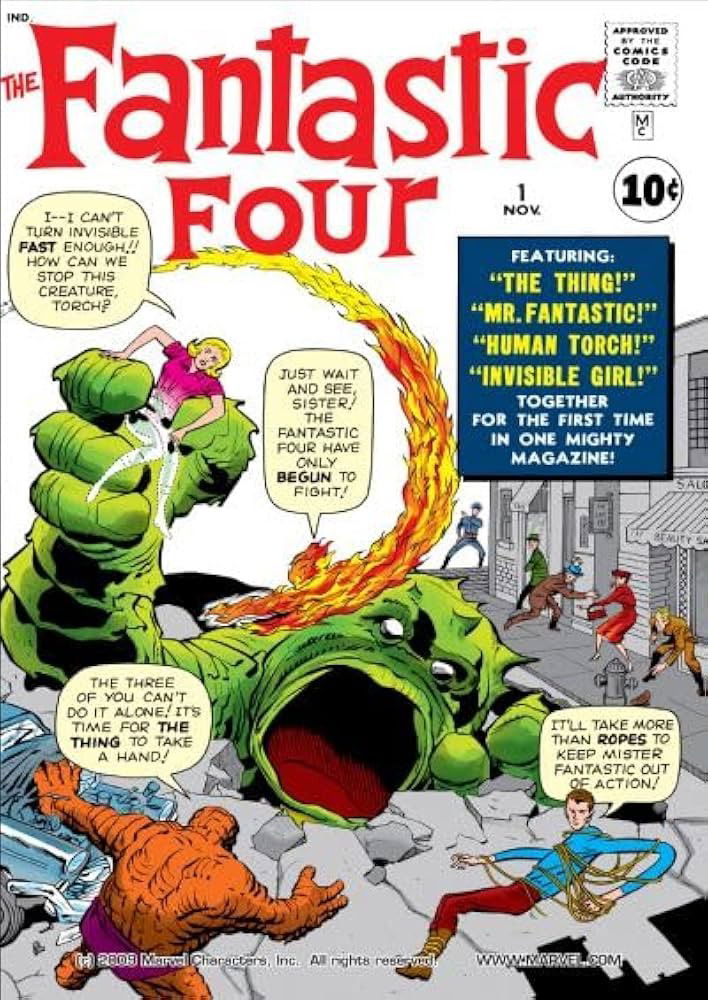
Stan Lee, already tired of the traditional comic book format, saw in it an opportunity to do something different. He wanted to create more human characters, with flaws, conflicts and personal problems, something that almost didn't exist in superhero comics at the time. Alongside Jack Kirby, one of the most influential artists in comic book history, Lee conceived the Fantastic Four as a group of adventurers and scientists who gained powers after being exposed to cosmic radiation on a space mission.
The Fantastic Four ended up becoming an innovative project because it broke several narrative conventions. Until then, superheroes had secret identities, followed a strict moral code, and rarely showed emotional weaknesses or personal problems. The group created by Lee and Kirby went in the opposite direction: they were known to the public, argued among themselves, had financial problems, disagreed with their own roles as heroes, and, most importantly, they seemed human.
Another factor that set the Fantastic Four apart was its focus on exploration and discovery, something that reflected the spirit of the time. The early 60s were marked by the space race between the United States and the Soviet Union, with humankind dreaming of conquering space. The very concept of the group's origin, with exposure to cosmic radiation during space travel, fit perfectly into this context. Moreover, science fiction was on the rise in pop culture, both in cinema and literature, and the Fantastic Four took advantage of this trend, bringing cosmic concepts, parallel dimensions, and scientific advances as an essential part of their stories.
Gaining Super Powers
If you've watched any of the Quartet's adaptations, it's quite possible that you know their origins: A family made up of Reed Richards, one of the most brilliant scientific minds in the world, his fiancée, Susan Storm and his “kid” brother Johnny Storm, as well as the skilled pilot, Benjamin Grimm. The story reveals that Reed Richards developed an experimental rocket to explore space before the Russians or any other nation did so.
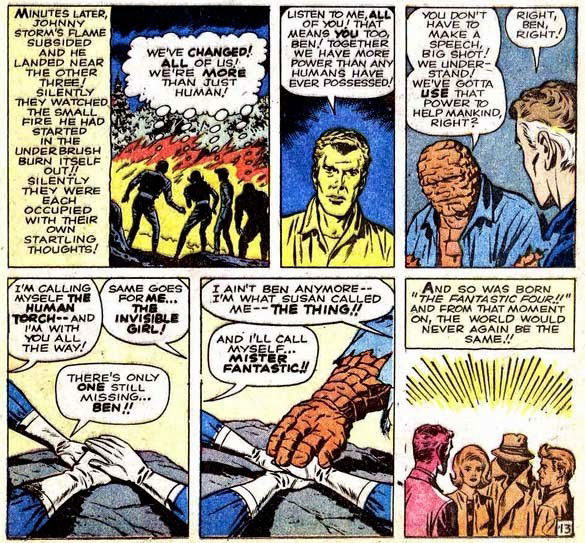
Even though they were aware of the risks, the four decide to leave, but, while crossing space, they are hit by a storm of cosmic rays. The radiation affects them in different ways and causes them to lose control of the ship, which crashes back to Earth. When they wake up, they realize that they have suffered irreversible mutations.
In the group's first story in the comics, after telling their origin through a flashback, the already well-established and famous group Fantastic Four investigates a series of strange earthquakes that are shaking the planet. Reed discovers that these tremors are not natural, but rather caused by something underground.
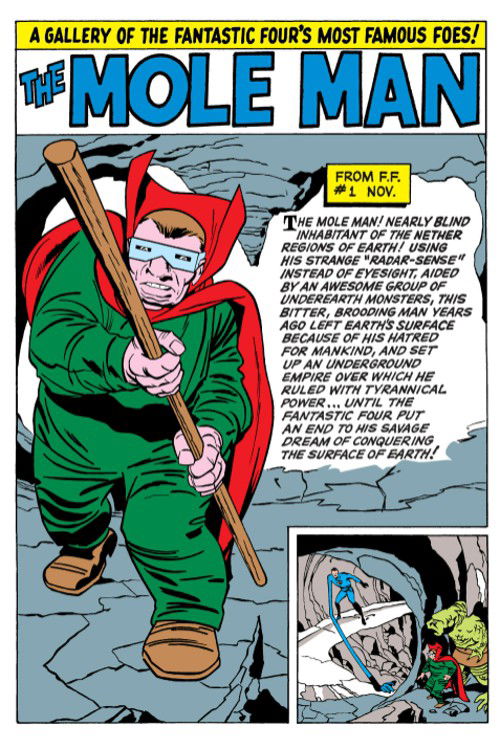
They travel to a remote island, where they encounter the villain responsible: Mole Man. He’s a scientist rejected by humanity, who isolated himself underground and discovered there a network of tunnels which run throughout the planet. He also encountered giant monsters that live in the depths and began to command them.
Mole Man plans to use these creatures and his underground army to attack the surface, destroying cities with earthquakes. The Fantastic Four face the monsters and manage to stop their plans, but Mole Man escapes back underground before being captured.
The Fantastic Four's plots were episodic, and they faced some minor villains, but, with the success and growth of the publisher, new heroes appearing and increasingly complex and intricate plots, the Fantastic Four universe formed the basis of what we know as the Marvel Universe of today. For example, cosmic villains who became threats to the entire world, such as Galactus first appeared in the Fantastic Four comics, as well as the Skull's, who were responsible for one of the publisher's most important sagas, the Secret Wars.
The Main Members of the Fantastic Four
The members of the Fantastic Four are the result of exposure to cosmic rays, but they go beyond simply acquiring superhuman abilities. Each of them has developed powers which reflect their personality and role on the team, making the group dynamic quite unique.
Reed Richards, Mr. Fantastic
Initially, after exposure to cosmic rays, the scientist gained the ability to stretch and shape his body in an elastic way.
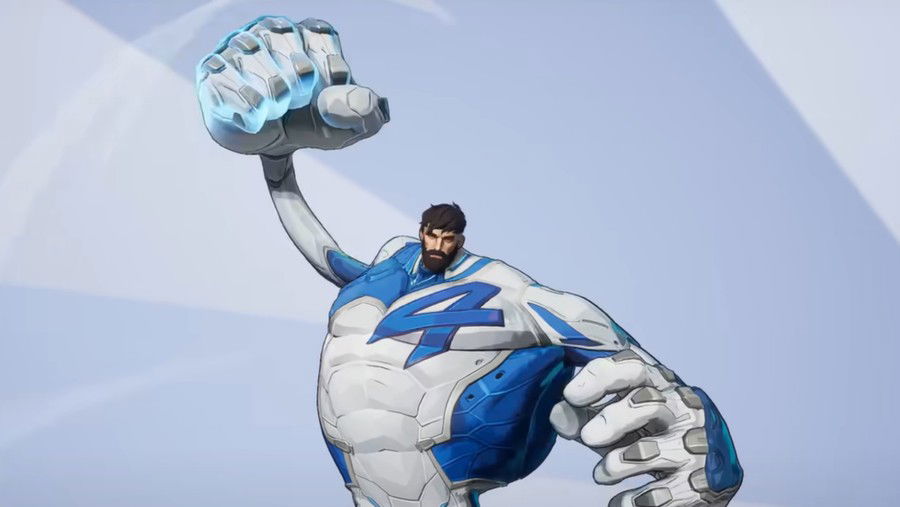
Initially, he used these powers to do “simpler and sillier” things such as becoming a sail for a boat, a parachute or stretching his limbs to “trip” Galactus. However, this physical malleability is intrinsically linked to his intellect, as it not only reflects his ability to adapt and flexible thinking, but also influences the way he sees and solves problems.
His brain, like his body, can operate in an expanded way, allowing it to process information in a faster and more innovative way. However, there are limits to his elasticity, and stretching too much can leave him vulnerable.
His body is also highly resistant to impacts, but can be affected by extreme temperatures, such as intense cold, which make its elasticity less effective. Over the years, Reed has become a character much more focused on using his intelligence than his elastic powers.
Sue Storm, the Invisible Woman
She started out just being able to disappear, but over time her powers evolved into something much more complex.
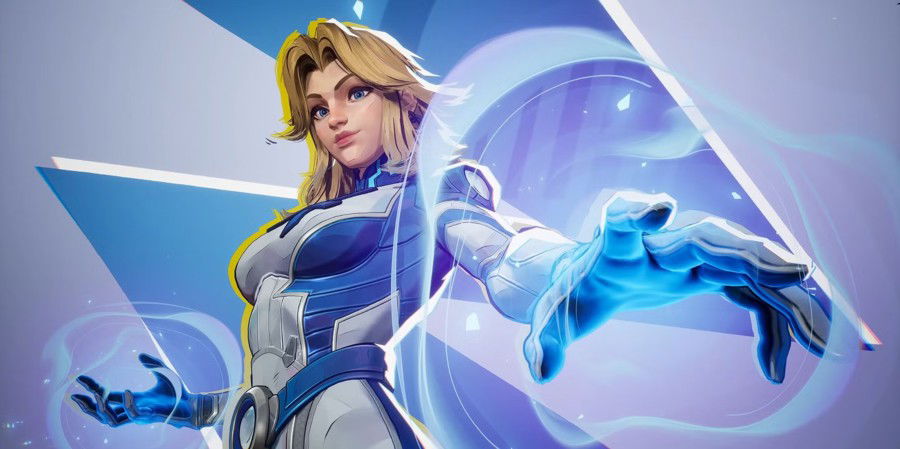
She can make objects and people invisible by controlling how light interacts with them, but her real differential lies in manipulating force fields. These fields can take different forms and be used both defensively, creating insurmountable barriers, and offensively, crushing or piercing opponents.
Her control over this invisible energy has become so refined that she can manipulate tiny objects and even create force fields inside an enemy's body to neutralize them. Despite this, her powers require a great deal of mental effort, and prolonged use can leave her exhausted.
She’s also capable of manipulating the atmosphere around her, making certain areas invisible and creating optical illusions to confuse adversaries.
Johnny Storm, the Human Torch
Johnny has the power to engulf his body in flames and control the fire in a precise manner. He can fly, powered by the combustion of his own body and generate explosions of flames with extremely high temperatures, reaching levels comparable to those of the Sun.
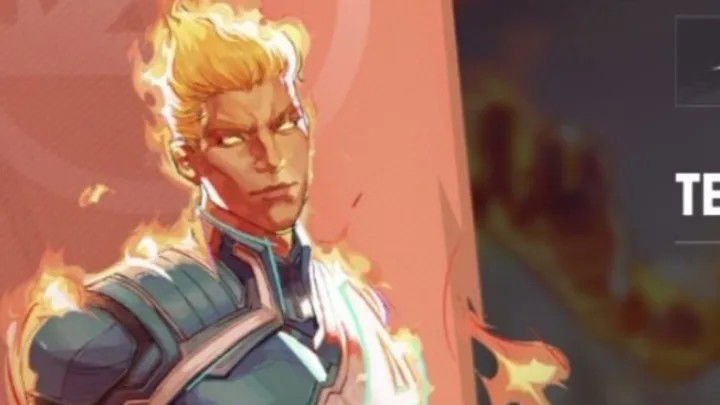
His most powerful move, called "supernova", releases a devastating thermal blast, but can also be dangerous to both himself and his allies. Over time, he has developed such precise control over his fire that he can mold it into temporary solid shapes and even adjust its temperature to burn only certain materials without causing collateral damage.
Despite this, his fire needs oxygen to stay lit, and it can go out if deprived of this element. Overusing his powers can also cause him to exhaust himself, especially when he reaches extreme temperatures.
Ben Grimm, the Thing
Ben is the member who went through the most drastic transformation. His skin, as well as all of his internal organs, were replaced with a rocky shell, making him extremely strong and resistant. His strength rivals that of some of the most powerful beings in the Marvel universe, such as the Hulk, and his durability makes him practically invulnerable to bullets, explosions and impacts.
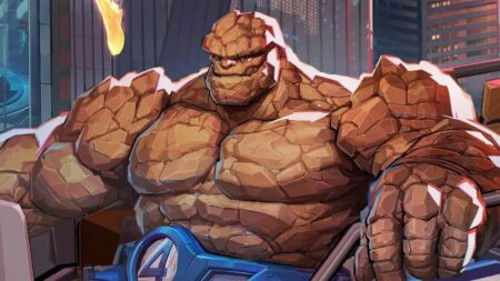
However, his transformation not only affected his physical appearance, but also his perception of himself, making him the most reluctant of the group members to accept his powers. Over the years, his body structure has undergone variations, with different levels of density and resistance.
There were times when he became temporarily weaker or his appearance changed, becoming more monstrous or more humanoid. In fights against enemies like Wolverine, he has even lost this rocky shell, showing that there’s still flesh beneath it.
Although his strength is his most notable characteristic, he also has a high level of resistance to energetic and psychic attacks, due to the structure of his brain within his dense rocky carapace, in addition to being – virtually – immortal, as he has extremely slowed aging.
Franklin Richards
Reed and Sue's eldest son is a mutant born with impressive cosmic abilities. Classified as an Omega-level mutant, he is, undoubtedly, one of the most powerful children in the Marvel universe. Franklin can manipulate reality on an almost unlimited scale, being able to alter the flow of time, create alternative universes and even manipulate matter and energy.
In one of his stories, Franklin simply “wished” to have Galactus himself as his nanny, which ended up happening. His immense ability is something that his own parents have difficulty fully understanding, which leads to moments of great concern.
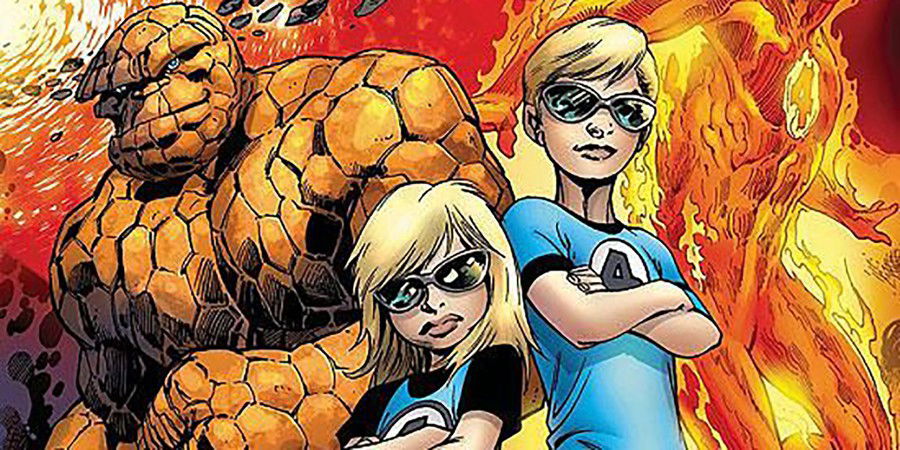
Valeria Richards
The couple's youngest daughter is one of the most intriguing and unusual characters in the Marvel universe, especially because, despite being very young, she displays phenomenal intelligence.
Valeria is a true prodigy, with an IQ higher than her father, Reed, and an almost superhuman ability to solve complex problems, especially in the areas of science and technology. She also inherited certain aspects of her mother Sue Storm's abilities, although in a more intellectual rather than physical manner.
Valeria was introduced to the world as a much younger version of Reed, but with the curiosity and dedication to understand the complexities of the universe around her. Her intelligence made her an essential presence at the Future Foundation and, for a long time, a point of support for Reed and Sue.
One of the most interesting points about Valéria is that she’s very attached to her godfather, Victor Von Doom, Dr. Destiny. When Sue was pregnant and Reed was unavailable, it was up to Johnny to look for help anywhere to save his sister. With no choice, he turned to Doom who agreed to save Sue and the child, but at a price. When she was born, Doom was chosen as her godfather and named her after an old love of his.
The Other Members of the Fantastic Four
Over the years, the Fantastic Four have undergone several temporary changes in their lineup. Although Reed, Sue, Johnny and Ben are the basis of the team, there have been times when one or more of them were absent, whether for personal reasons, apparent deaths or side missions, making room for replacements and temporary members.
One of the most curious formations of the Fantastic Four was made up of Wolverine, Spider-Man, Hulk and the Ghost Rider. This group appeared in the saga "The New Fantastic Four", published in Fantastic Four #347-349 (1990), written by Walter Simonson and illustrated by Arthur Adams.

In the plot, a Skrull disguised as Sue Storm tricks the original Fantastic Four and puts them out of combat. This creates an opportunity for the villain De'Lila, another Skrull, who is fleeing her own race, to find a mysterious artifact, which she uses to mentally manipulate four of the most powerful heroes of the time: Wolverine, Spider-Man, Hulk (in his intelligent phase, as Joe Fixit) and the Ghost Rider, making them believe that the original Quartet has died and that they need to take over the team. This alternative group ends up facing space threats, but upon realizing they’ve been tricked, they confront De’Lila and help the real Fantastic Four regain their place.
Another different formation happened when the hero Johnny Storm was presumed dead, which deeply affected the original members of the Quartet. The Future Foundation functioned as a research institute, bringing together some of the most brilliant minds in the Marvel universe, including scientists, young prodigies and even former villains.
The idea came about when Reed realized that, to truly change the world, it wasn't enough to just fight immediate threats – it was necessary to invest in the next generation. So, he brought together a group of super-intelligent young people, including his own children Franklin and Valeria Richards, as well as mutant children, Atlanteans and even some members of the Moloid race. The goal was to encourage creativity and innovative thinking, giving these young people the resources they need to develop solutions that could transform the future.
For a time, the Foundation included heroes like Spider-Man and even Doctor Doom, who, despite being a classic enemy of the Quartet, had moments when he collaborated with the team out of self-interest.
Fantastic Four at the Movies
About to receive their newest adaptation, Fantastic Four: First Steps, we can say that, in general, the characters are not completely foreign to the public like other heroes from Marvel Rivals, such as Squirrel Girl. The Fantastic Four film adaptations include three main attempts, each with distinct approaches.
The 1994 adaptation, directed by Roger Corman, was a low-budget production made quickly to secure the adaptation rights to the characters. The film was never commercially released and is a simplified version of the characters and plot, but without great pretensions. You can watch it on the internet, searching for it on YouTube or other sites.
In the 2000s, the Fantastic Four had two other adaptations with more resources. "Fantastic Four" (2005) and "Fantastic Four and the Silver Surfer" (2007), both directed by Tim Story. The first film followed the classic origin, with the characters acquiring their powers after being hit by cosmic rays. The second expanded the plot, introducing the Silver Surfer, but the adaptation of Galactus as a giant cloud was criticized. The films were well received, but they still weren't the success Fox wanted.
The 2015 version, directed by Josh Trank, attempted a reboot with a darker, more realistic tone. The heroes' origin was changed to a scientific experiment, and the film focused more on the scientific and psychological aspects of the characters. However, the film suffered from behind-the-scenes disputes, changes in tone from a Sci-Fi film to a “hero movie” and had a weak villain. As a result, it was a critics and box office failure.
These three adaptations attempted to capture the spirit of the Fantastic Four in different ways, but none managed to completely satisfy fans' expectations. The future of the franchise in the movies is now in the hands of the MCU and will arrive in 2025 with “First Steps”.
Now, talk to us, did you enjoy the films? Do you play as any of the Quartet heroes in Marvel Rivals? Leave a comment and read more about Marvel Rivals on the website.









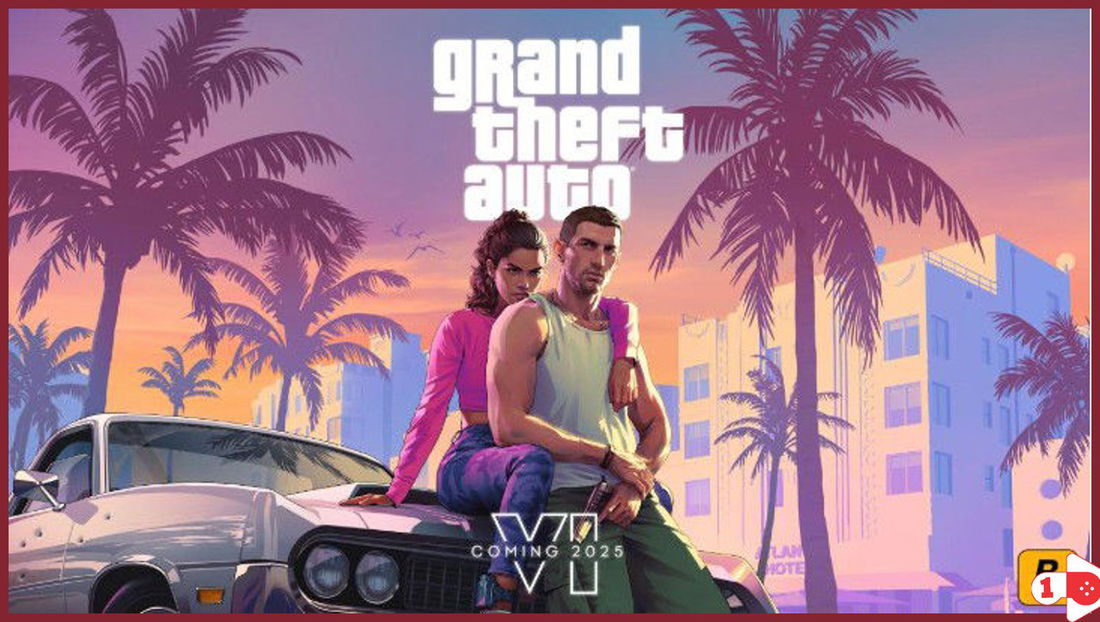
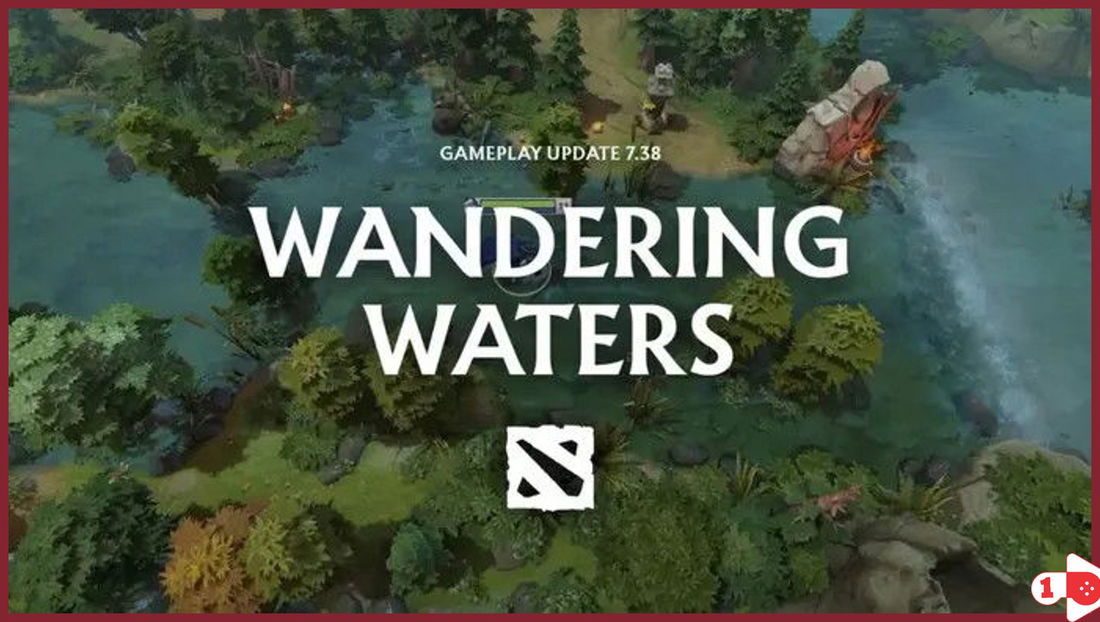

— commentaires 0
, Réactions 1
Soyez le premier à commenter